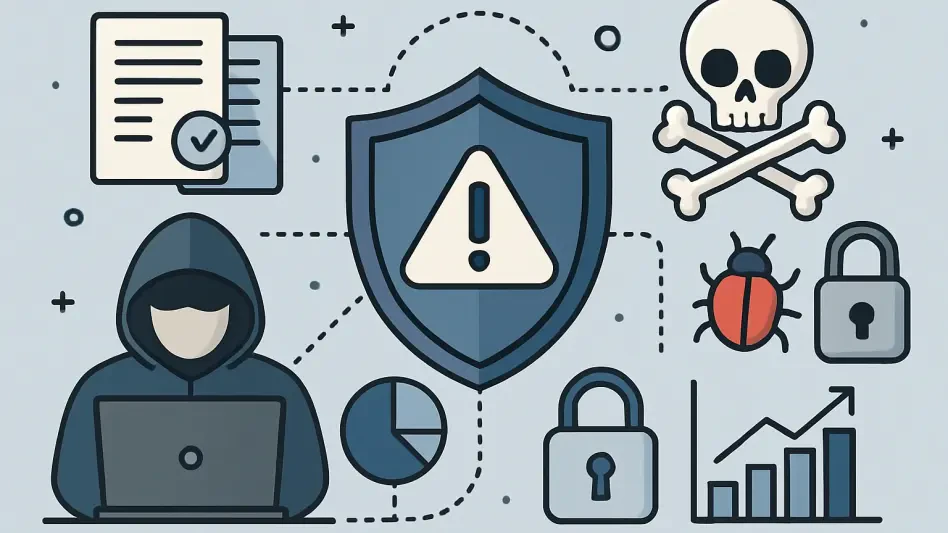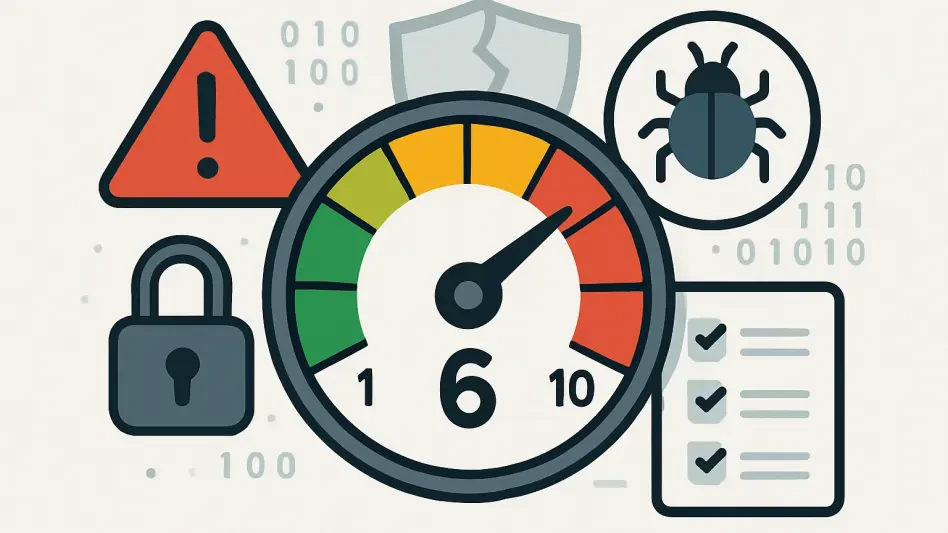Security leaders entered 2026 facing sprawling attack surfaces that changed by the hour, and the cost of guessing wrong ballooned as misconfigurations, identity drift, and vendor exposures converged into single points of failure that legacy scanners never saw coming. Budgets did not expand at the same pace, so attention shifted from counting vulnerabilities to proving which exposures actually opened an attack path to something the business cared about. That inflection pulled Exposure Management into the center of strategy, not as another dashboard, but as a living operating model that keeps discovery, prioritization, validation, and remediation in rhythm. Continuous Threat Exposure Management turned from slideware into the practical cadence of security programs, and the market responded with platforms that promise to consolidate signal, add attacker and business context, and mobilize fixes where work really gets done.
Defining Exposure Management and CTEM
Exposure Management framed risk as a dynamic, organization-wide state rather than a quarterly list of CVEs. The discipline combined ongoing discovery of assets and misconfigurations with a ruthless focus on context—who owns the system, what data it touches, which identities it trusts, and how an attacker could chain weaknesses into a credible path to impact. In practice, that meant correlating signals from cloud APIs, identity stores, endpoint sensors, external attack surface crawlers, and threat intelligence into a single, consistent model. Instead of drowning teams in raw counts, leaders aimed at the handful of exposures that were both exploitable and business-relevant, then moved those to the front of the line with clear, prescriptive fixes.
The CTEM loop gave structure to that ambition. Scoping bound the effort to crown jewels and risk themes; discovery swept across internal, cloud, SaaS, and internet-facing assets; prioritization applied attacker activity, business importance, and graph-backed dependency mapping; validation confirmed exploitability or control failure; mobilization turned findings into workflow-backed change. The value surfaced when these steps reinforced each other across short, repeatable cycles. Discovery informed new scope; validation tuned prioritization; mobilization created feedback for owners and governance. With each loop, the signal-to-noise ratio improved, and leadership gained a defensible story that tied technical posture to business risk reduction.
How We Evaluated Platforms
Evaluating platforms required looking beyond features to the tempo and friction of real-world operations. Breadth of discovery mattered, but so did the means of getting there—agentless, API-first collection reduced deployment drag in multi-cloud and SaaS, while sensors remained crucial where deep host telemetry or rapid response were non-negotiable. The strongest products illuminated unknown assets and shadow IT without a change request, then enriched that inventory with ownership metadata, sensitivity labels, and connectivity maps. Capacity to traverse on-premises, hybrid cloud, and niche environments like OT or code repositories separated comprehensive platforms from point tools cloaked in platform marketing.
Prioritization quality proved equally decisive. Tools that leaned only on static severity inflated queues, while those that merged active exploitation data, brand-new intelligence on adversary tradecraft, and business context produced short, confident lists that resonated with executives. Attack path analytics became a common differentiator, especially when implemented as a graph that captured how identities, configurations, and data relationships created blast radius. Validation moved from bragging rights to baseline expectation: BAS, automated testing of exposed assets, or kill chain simulations confirmed what truly mattered. Finally, integrations with ticketing, CI/CD, cloud control planes, and XDR determined whether findings became durable improvements or just another report.
Market Themes in 2026
Several themes defined the year. First, the boundary of EM stretched far past vulnerability management. Programs stitched together misconfigurations, identity risks, exposed secrets, code and pipeline issues, external surface changes, and third‑party signals into one view. Second, continuous discovery ceased to be negotiable. Daily or near‑real‑time sweeps uncovered drift that weekly scans missed—new services in cloud accounts, risky SaaS connections, and vendor infrastructure changes that altered external posture overnight. Third, context turned into the difference between a busy team and a successful one; leaders insisted on business ownership, sensitivity labels, and dependency maps alongside attacker activity to concentrate scarce attention.
Validation rose as a pragmatic antidote to alert fatigue. Platforms that could safely test controls or verify exploitability trimmed backlogs and gave remediation teams clarity on what to fix first. Equally important, integration made or broke outcomes. The tools that pushed precise tickets to Jira and ServiceNow, generated guardrail pull requests in repositories, or enforced policy in cloud via native APIs collapsed mean time to remediate. In this environment, success looked less like a single pane of glass and more like a control plane for orchestrating exposure reduction across existing workflows. The best platforms fit the rhythms of the SOC, not the other way around.
Trends Reshaping EM
The shift to CTEM’s cyclical practice consolidated scattered initiatives into a coherent operating model. EASM, CSPM/CNAPP, and traditional VM started to blur into unified exposure platforms that could tell a full inside‑out and outside‑in risk story. Graph techniques matured, giving security teams a way to visualize how a public bucket, an over‑privileged role, and a forgotten internet‑facing asset might converge into a credible breach path. Meanwhile, predictive analytics that considered exploitation in the wild and local compensating controls produced prioritization that aligned with the latest adversary activity rather than stale severity scores.
Collection methods also converged toward the practical. Agentless and API‑based snapshots became the default for cloud and SaaS, accelerating coverage and reducing change management overhead. Yet sensors kept relevance where deep process telemetry, lateral movement visibility, or real‑time enforcement were essential—particularly on endpoints and in identity-heavy environments. Validation moved mainstream, with platforms embedding BAS modules or orchestrating active checks against exposed assets. Finally, inclusion of third‑party and brand risks broadened the definition of exposure; vendor ecosystems, partner connections, and impersonation emerged as equally viable entry points and demanded daily, measurable oversight.
Vendor Snapshots
A small group of platforms set the tone across different risk domains. On the intelligence front, Mandiant leaned on frontline insights to shape external discovery and prioritization, offering a perspective that closely tracked current adversary behavior. Its strength lay in the fidelity of intel‑informed checks and multi‑cloud external visibility, while automated BAS was less emphasized. Wiz staked the ground as a cloud‑native leader, building an agentless Security Graph that correlated misconfigurations, vulnerabilities, identities, and data at cloud scale, then threading that context into code scanning and VM workflows; it excelled in multi‑cloud depth but proved less focused on classic EASM or heavy on‑premises coverage.
RiskProfiler approached exposure from the outside‑in with breadth: EASM, cloud exposure views, vendor risk analytics, and brand protection, including phishing and typosquatting detection. It resonated where third‑party dependence and brand risk were central, though its internal exposure depth was lighter. CrowdStrike Falcon wove exposure visibility into a ubiquitous sensor footprint and strong intelligence, delivering asset classification, vulnerability workflows, and identity signals in one ecosystem—particularly compelling where Falcon was already standard, albeit less agentless than cloud‑first rivals. Tenable One and Qualys represented evolutionary paths for organizations modernizing from VM to EM: Tenable unified EASM, cloud, Active Directory security, and app scanning with predictive scoring and broad asset reach, including OT; Qualys integrated outside‑in discovery into VMDR workflows, offering familiar operations for existing customers while its EASM felt more additive than foundational.
CyCognito brought an attacker’s lens to external discovery and automated testing, actively validating exploitability across internet‑exposed assets and shadow IT while placing less weight on internal scanning. Microsoft Defender consolidated exposure insights across Azure, Microsoft 365, and endpoint via native integrations and intelligence, a natural fit for standardized Microsoft environments but less ideal for heterogeneous stacks. Cymulate emphasized validation with deep BAS to test the full kill chain and tune controls, framing external discovery as supportive rather than central. Bitsight, known for security ratings, reinforced governance and vendor oversight with daily external discovery and analytics, focusing more on third‑party and executive reporting than internal attack path depth. Together, these tools mapped to distinct needs and ecosystems, encouraging buyers to select for dominant risks rather than chasing a one‑size‑fits‑all winner.
Comparative Context And Differentiators
Despite different entry points, leaders converged on the same pillars: continuous discovery, context‑rich prioritization, validation of exploitability, and integration with operational workflows. What separated them were the angles of approach. Intelligence‑first platforms such as Mandiant and Microsoft translated active adversary trends into prioritization that felt immediate and field‑relevant, while graph‑centric engines like Wiz and Tenable emphasized architecture‑aware insights that revealed blast radius across identities, data stores, and configurations. Validation‑led products including Cymulate and CyCognito turned proof into policy, shrinking queues by focusing only on what actually broke.
Deployment philosophy also shaped outcomes. Cloud‑first, agentless platforms offered fast time‑to‑value in multi‑cloud estates and SaaS, and they shined where coverage breadth and owner attribution depended on APIs. Sensor‑centric ecosystems, exemplified by CrowdStrike, supplied rich, real‑time depth and simplified operations when the agent was already ubiquitous. External posture specialists such as Bitsight and RiskProfiler pushed the perimeter wider to include vendor and brand risk, producing governance‑friendly metrics that complemented engineering‑heavy tools. The practical takeaway: most programs balanced an internal context leader with an external discovery or validation leader, or adopted a consolidating suite and supplemented targeted gaps where necessary.
Buyer Playbook For Real‑World Fit
Successful selection started with scoping, not shopping. Enterprises with sprawling multi‑cloud footprints and identity sprawl saw outsized returns from a cloud‑native graph platform that traced entitlements, mapped data exposure, and visualized attack paths; pairing that context with CI/CD and identity governance integrations created rapid guardrails and least‑privilege changes. Organizations facing persistent shadow IT and internet‑exposed weaknesses prioritized EASM combined with attacker‑style validation to catch what change management missed and to separate signal from noise on public‑facing assets. Where an ecosystem already dominated—Microsoft in productivity and cloud, or CrowdStrike on endpoints—native exposure modules delivered speed through shared telemetry, unified policies, and license economics.
For programs modernizing from traditional VM, Tenable One and Qualys provided a pragmatic bridge, preserving scanner investments while layering predictive risk scoring, external discovery, and cloud context. Vendor‑intensive sectors leaned into RiskProfiler or Bitsight to quantify third‑party posture and brand abuse, connecting findings directly to contract and governance processes. Teams that had to prove control effectiveness or reduce false positives in detection pipelines added Cymulate’s BAS and purple team workflows, then fed validated results into prioritization. Across all scenarios, integration into ticketing and change workflows dominated time‑to‑value; platforms that automated owner assignment, generated precise remediation steps, and verified closure consistently cut MTTR.
Metrics That Proved Progress
Programs measured success through tempo, precision, and impact. Mean time to detect asset changes—new cloud resources, policy drifts, unknown external hosts—indicated whether discovery truly ran continuously. Mean time to remediate the highest‑risk exposures reflected whether prioritization, guidance, and integrations actually accelerated fixes. Another signal was validation density: the share of exposures confirmed as exploitable compared with the total discovered. Higher ratios implied tighter prioritization and less wasted effort, while also boosting executive confidence that remediation work was lowering real risk rather than chasing theoretical flaws.
Graph‑aware metrics brought business meaning into focus. Teams tracked the reduction in exploitable attack paths to crown jewels, not just counts of patched vulnerabilities. Coverage of shadow IT and third‑party assets moved from anecdotes to scores, tying external oversight to contractual expectations. Control effectiveness before and after validation‑driven tuning showed whether BAS improved detection and prevention in practice. Finally, board‑level risk summaries translated posture into business impact, highlighting fewer, more consequential scenarios and the measured decline in blast radius over time. These metrics aligned the CTEM loop to outcomes, not activity, and justified investment in platforms that produced credible, repeatable improvement.
Where The Market Is Heading
Identity context emerged as the next frontier. Platforms expanded correlation between exposures and entitlements, including machine identities and service connectors that often sat outside traditional IAM governance. Expectation grew for tools to map lateral movement potential across hybrid estates, blending signals from directories, cloud roles, and endpoint telemetry into a coherent privilege narrative. Automated remediation also moved up the stack. Instead of one‑click fixes that produced drift later, platforms started to suggest least‑privilege policies, generate infrastructure‑as‑code patches, and enforce preventative guardrails that blocked recurrence through policy and pipeline.
Third‑party oversight shifted from questionnaires to continuous validation. External discovery and behavioral telemetry for vendors and partners began to shape exposure scores in near real time, replacing static attestations with measurable posture. Unified exposure graphs connected external and internal perspectives, letting teams see how a vendor‑hosted asset might open a path to a cloud workload and then to a critical dataset. Business risk quantification matured alongside these models, with loss expectancy estimates tied to validated attack paths and control coverage. As consolidation continued, the market gravitated toward platforms that could narrate this end‑to‑end view without sacrificing the depth required by specialists.
Operating Model That Turns Tools Into Outcomes
Tools performed best when anchored to a disciplined CTEM cadence. Scoping set the stakes by naming crown jewels, agreeing on risk themes, and defining boundaries for third‑party oversight. Discovery operated continuously across cloud APIs, SaaS tenants, internal networks, and the public internet, with collection modes chosen for speed and depth by domain. Prioritization merged attacker activity, business criticality, and attack path analytics to spotlight a small set of issues with credible routes to impact, while visibility stayed transparent so owners understood why items rose to the top. Validation then confirmed exploitability or control weakness through BAS or active testing, which not only trimmed queues but also improved detection rules and hardening baselines.
Mobilization brought it all together in the systems where change happened. Precision tickets flowed to Jira and ServiceNow with assigned owners, severity justified by context, and prescriptive guidance that avoided back‑and‑forth. Cloud‑native fixes executed through Terraform, policy engines, or platform APIs, closing the loop with re‑scans and validation checks. Governance tracked MTTR, validated risk reduction, and control effectiveness, feeding those results into the next scoping cycle. When run in short, repeatable loops, the model created compounding benefits: better discovery informed tighter scope, better validation sharpened prioritization, and better mobilization improved confidence and speed across teams outside the SOC.
Strategic Synthesis For Decision‑Makers
Choosing among the top platforms hinged on matching strengths to the dominant risk domain. Cloud‑first enterprises with identity complexity benefited most from agentless, graph‑centric leaders that illuminated relationships across workloads, data, and entitlements. Organizations contending with brand abuse, vendor sprawl, and rampant shadow IT needed external‑first discovery with attacker‑style validation to keep exposure maps honest and actionable. Ecosystem‑standardized shops realized value fastest by leaning into native modules that shared telemetry and policy, while mature VM programs stepped into EM through consolidating suites that preserved process continuity. In many cases, the most resilient approach combined an internal context anchor with an external validation specialist, enforcing a balanced, end‑to‑end narrative.
Across the board, context and validation separated meaningful outcomes from busywork. Platforms that explained why an exposure mattered in business terms and then proved it mattered through safe testing earned the right to drive change. Integration sealed the deal; without tight ties to ITSM, CI/CD, and cloud control planes, even brilliant prioritization stalled. As consolidation marched on, leaders favored fewer panes of glass that could still serve specialists with depth. Ultimately, EM’s maturation was less about any one vendor and more about how well a program orchestrated these capabilities through disciplined CTEM loops that kept evidence and improvement front and center.
What Comes Next For Exposure‑Driven Programs
The immediate horizon pointed to even tighter feedback loops. As validation insights flowed into prioritization models and policy engines, platforms adjusted weightings in near real time and prevented classes of issues at creation. Identity‑aware analytics grew more prescriptive, recommending concrete entitlement changes and simulating access impacts before deployment. External oversight blended ratings with verification, flagging vendor drifts and invoking contractual responses without manual cycles. Meanwhile, board reporting shifted from roll‑ups of counts to scenario‑based narratives: which critical business processes faced validated attack paths, how controls performed in tests, and what quarter‑over‑quarter gains actually cut exposure.
Programs that excelled fostered shared accountability. Engineering teams owned preventative guardrails in pipelines; cloud teams automated policy; security operations drove context and validation; governance tracked measurable reduction tied to business value. Tooling reinforced that choreography rather than dictating it, and the ability to swap components without breaking the CTEM loop became a strategic hedge. With these patterns in place, exposure management transformed from a reporting exercise into a continuous, collaborative practice that shaped architecture decisions as much as it reported on them.
From Insight To Action
The year’s comparison underscored that the strongest results came from combining continuous discovery, context‑driven prioritization, verification of exploitability, and workflow‑native remediation into short, repeatable cycles that cut measurable risk. Each of the ten platforms contributed distinct advantages—cloud depth, attacker intelligence, external validation, ecosystem leverage, VM continuity, third‑party analytics—and the most effective programs matched those strengths to their dominant risks and operating realities. Selection, integration, and cadence proved decisive: the tools that fit an environment’s tempo and plugged directly into change mechanisms delivered fewer, higher‑confidence findings and faster, provable fixes.
Successful teams treated CTEM as the operating backbone rather than a project. Scope guided discovery, validation sharpened focus, and mobilization closed the loop in systems that already moved the business. Over the course of the year, this approach produced a defensible narrative of exposure reduction anchored in evidence, not volume. Security leaders translated that narrative into resource decisions and architectural guardrails, and the market’s leading platforms, while varied in emphasis, collectively enabled that shift from counting problems to proving progress.








